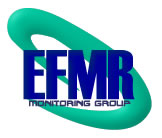Three Mile Island
July 20 – The NRC granted requests from TMI operator Exelon for relief and allowed it to use alternative procedures to certain requirements for in-service examination of components and steam pressure tests conducted during 10-year intervals. The requests were part of the fourth 10-year inspection that began on April 20, 2011 and ends no later than April 19, 2022.
The NRC staff concluded that that the proposed alternatives for some of the requirements “provide an acceptable level of quality and safety” as outlined by Exelon.
The staff also noted that Exelon had “demonstrated that it is impractical to comply with the specified” American Society of Mechanical Engineers code requirements for one issue and “that the proposed alternative testing will provide reasonable assurance of leak tightness of the subject components.”
July 27 - The NRC staff issued a letter on its inspection of TMI for the quarter running from April through June 2011. The staff said no findings of significance were identified.
The report added that inspectors determined “that corrective actions to address configuration control performance deficiencies from the first half of 2010 and transient material control deficiencies from all of calendar year 2010 continued to be effective.” It added that the number of configuration control deficiencies identified in the first half of 2011 “were notably reduced from the first half of 2010.”
But the report noted that inspectors “identified several instances for which corrective action timelines was not commensurate with potential significance of degraded equipment conditions.” It added, “Station management acknowledged the issues, verified they were captured in the corrective action program, and initiated several significant station-wide actions to reemphasize worker performance fundamentals. The inspectors determined these correction actions were appropriate and observed improved worker fundamental performance through the end of June 2011.”
Susquehanna Steam Electric Station in Berwick
July 20, 2011 – The NRC issued a letter on the completion of its triennial (every three years) fire inspection of Units 1 and 2 at the plant.
Based on the inspection, two findings of very low safety significance were identified. The NRC said it would treat the findings as non-cited violations because they were entered into the plant’s corrective action program and they were of very low safety significance.
One of the violations involved the failure of plant operator PPL to adequately implement “a fire water supply system with two redundant 100 percent capacity fire water pumps and three sources of supply water.”
“Design flow rates could not be achieved and maintained by a single fire water pump for all required sprinkler systems,” the report said. “PPL performed an operability evaluation and determined the affected sprinkler systems were capable of performing their intended functions at lower flow rates and for a shorter duration than originally specified by plant design. In addition, the Unit 2 cooling tower basin was determined to be inoperable as a sole source of supply water for the fire water system.”
“From initial plant conduction until present,” the report added, “PPL failed to provide two redundant fire water pumps that could be supplied from any of three separate water sources.” The NRC said the issue was entered into PPL’s corrective action program.
The other finding involved the failure to implement all provisions of the approved fire protection program. “Specifically, PPL established acceptance criteria in the fire pump performance tests that were non-conservative compared to design basis requirements and the test acceptance criteria were insufficient to demonstrate that the fire pumps could provide sufficient pump pressure to satisfy required sprinkler system hydraulic needs.”
The report added, “PPL’s corrective actions program required fire protection deficiencies be identified and corrected. The team determined that PPL had not adequately implemented the required quality assurance criteria for fire pump testing, in that the combined tests did not demonstrate that pump performance conformed to design requirements or would perform satisfactorily in service.”

No comments:
Post a Comment